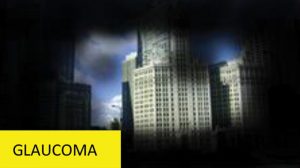

By Dr S.S. Gill
In conjunction with World Glaucoma Week 2020, Consultant Eye Surgeon Dr S.S. Gill talks to us about this “silent thief of sight.”
The World Glaucoma Association (WGA) and the World Glaucoma Patient Association (WGPA) have been pushing hard to increase global awareness of this “Sneak Thief of Sight”.
Glaucoma is a group of eye diseases that result in progressive damage of the optic nerve (the “main cable” that carries visual information from the eye to the brain). If glaucoma is not treated, it permanently damages vision in the affected eye(s) and results in blindness. It is often, but not always, associated with increased pressure of the fluid in the eye (aqueous humour).
FACTS AND FIGURES
- Glaucoma is the second most common cause of blindness worldwide; the third most common in Europe and the USA.
- An estimated 78 million individuals are currently living with glaucoma (2020).
- It is predicted that 111.8 million individuals will have glaucoma by 2040.
- 90% of glaucoma is undetected in developing countries.
- An estimated 11 million individuals will be bilaterally blind due to glaucoma by 2020 (13% of glaucoma cases).
- Accounts for 90% of blindness in the developing world and 75% of that is treatable or preventable.
- Family members of those with glaucoma have a 10-fold risk of getting glaucoma themselves.
(Source: https://www.glaucomapatients.org/basic/statistics/)




Glaucoma has been nicknamed the “silent thief of sight” because the vision loss normally occurs gradually over a long period of time without many symptoms until you eventually lose significant vision. In other words, it means that one will only notice poor vision when the disease is serious and the damage to the optic nerve is advanced.
WHY IT IS OFTEN UNNOTICED
One reason why a person may not realise that he or she is losing vision is because the vision loss involves the peripheral part of a person’s vision. This peripheral vision loss is the reason why it goes unnoticed by the patient until the very late stage when the central vision is completely lost. Rarely, in some patients, there may be symptoms of slight eye discomfort, mild headache and halos around lights. Every person aged 40 years and above should go for a glaucoma screening.
More on Glaucoma in the next issue of the Ipoh Echo.


